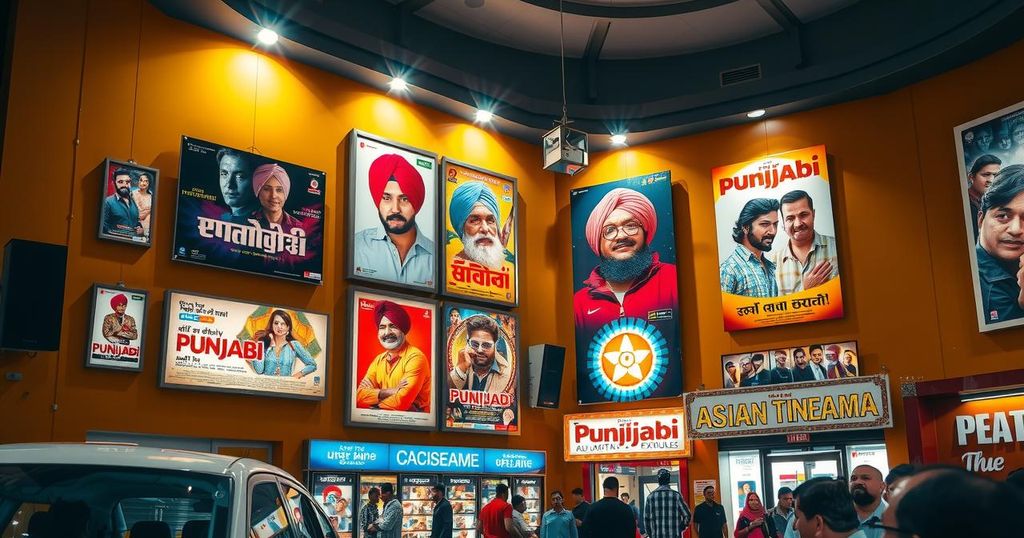Diljit Dosanjh’s Latest Film Faces Release Hurdles in India
- Diljit Dosanjh is a leading Asian figure in entertainment.
- Sardaar Ji 3 has been barred from releasing in India.
- The film has found international success despite the block.
- Controversy surrounds co-star Hania Aamir’s Pakistani nationality.
- Censorship has stalled further films like Panjab ’95.
Blockade on Indian Release of Sardaar Ji 3 Raises Questions
Diljit Dosanjh, undoubtedly a heavyweight in the Asian entertainment industry, finds himself facing an unexpected challenge in his latest film, Sardaar Ji 3. Despite his stature, with accolades like being the top Asian celebrity in the UK and accolades from his global tours, the film’s release in India has been stymied by cultural and political objections. The horror-comedy enjoys international success, hitting theaters outside India on June 27, yet one critical factor seems to be holding back the home audience: the film’s co-star, Hania Aamir, hailing from Pakistan.
Industry Experts Reflect on the Film’s Economic Impact
Since the militant attack in Kashmir on April 22, Indian-Pakistani relations have become increasingly sensitive. In response, various pieces of content from Pakistan have been removed under governmental orders. While Sardaar Ji 3 was filmed in the UK well before the diplomatic tensions escalated, the influential Federation of Western India Cine Employees has urged the Central Board of Film Certification to scrutinize the film’s release, specifically highlighting Aamir’s nationality as a reason for denial. Intriguingly, the film has performed astonishingly well internationally, reeling in 336 million rupees (around £2.9 million) in its opening week, even breaking records for Indian film openings in Pakistan. Why then must the Indian audience miss out?
Censorship Challenges Facing Punjabi Cinema
Indicating how lucrative a release in India could have been, film producer Girish Johar remarked that earnings could likely have doubled with Dosanjh’s vast fanbase drawing crowds. Further amplifying this issue, celebrated filmmaker Anurag Kashyap critiqued the prevailing censorship practices, asserting that Dosanjh effectively embodies India’s cultural representation. Kashyap claims that the uproar surrounding Aamir’s involvement is fundamentally rooted in a broader ideological struggle rather than a genuine concern regarding national unity. He believes the refusal to release Sardaar Ji 3 sends an alarming message, warning against creativity that diverges from mainstream narratives.
Future Implications for Creative Expression in India
Meanwhile, the situation is not unique to Dosanjh’s film. Another project, Panjab ’95, which focuses on the life of human rights activist Jaswant Singh Khalra, has become embroiled in ongoing censorship struggles since 2022. Director Honey Trehan recounts how initial suggestions for cuts have spiraled to an outrageous 127 potential removals, including the protagonist’s name and references to Punjab. Such intense scrutiny raises serious concerns about creative expression in the region, with Trehan lamenting that the ultimate goal appears to be exhausting filmmakers rather than simply enforcing censorship. As censorship intensifies, the cinema landscape in India faces an uncertain future, with greater implications for storytelling that diverges from the prevalent narratives.
Diljit Dosanjh’s current plight regarding the release of Sardaar Ji 3 highlights the complicated nature of film censorship in India, intertwined with cultural and political tensions. The refusal to release this film due to its co-star’s nationality, following heightened India-Pakistan relations, poses significant questions about creative freedom. As the situation unfolds, it challenges the notion of who gets to tell stories in cinema while simultaneously igniting greater viewer interest in works that face barriers.




Post Comment